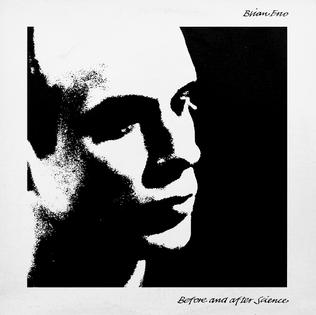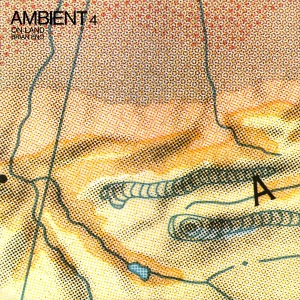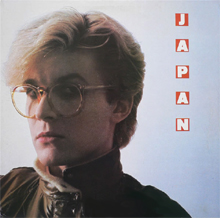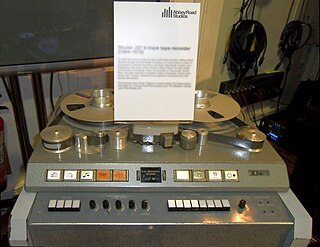Ambient music is a genre of music that emphasizes tone and atmosphere over traditional musical structure or rhythm. A form of instrumental music, it may lack net composition, beat, or structured melody. It uses textural layers of sound which can reward both passive and active listening and encourage a sense of calm or contemplation. The genre is said to evoke an "atmospheric", "visual", or "unobtrusive" quality. Nature soundscapes may be included, and the sounds of acoustic instruments such as the piano, strings and flute may be emulated through a synthesizer.

Steve Beresford is a British musician who graduated from the University of York He has played a variety of instruments, including piano, electronics, trumpet, euphonium, bass guitar and a wide variety of toy instruments, such as the toy piano. He has also played a wide range of music. He is probably best known for free improvisation, but has also written music for film and television and has been involved with a number of pop music groups.

Another Green World is the third studio album by English musician Brian Eno, released by Island Records in September 1975. Produced by Eno and Rhett Davies, it features contributions from a small core of musicians including Robert Fripp (guitar), Phil Collins (drums), Percy Jones, and Rod Melvin (piano). John Cale plays viola on two tracks.
Ambient techno is an offshoot of techno that united the atmospheric textures of ambient music with the rhythmic elements and production of techno and house. It was pioneered by 1990s electronic artists such as Aphex Twin, Carl Craig, Pete Namlook and Biosphere.

Before and After Science is the fifth studio album by British musician Brian Eno. Produced by Eno and Rhett Davies, it was originally released by Polydor Records in December 1977 in the United Kingdom and by Island U.S. soon after. Musicians from the U.K. and Germany collaborated on the album, including Robert Wyatt of Soft Machine, Fred Frith of Henry Cow, Phil Manzanera of Roxy Music, Paul Rudolph of Hawkwind, Andy Fraser of Free, Dave Mattacks of Fairport Convention, Jaki Liebezeit of Can, and Dieter Moebius and Hans-Joachim Roedelius of Cluster. Over one hundred tracks were written with only ten making the album's final cut. The musical styles of the album range from energetic and jagged to languid and pastoral.

Ambient 1: Music for Airports is the sixth studio album by English musician Brian Eno, released in 1978 by Polydor Records. The album consists of four compositions created by layering tape loops of differing lengths, and was designed to be continuously looped as a sound installation, with the intent of defusing the tense, anxious atmosphere of an airport terminal.

Selected Ambient Works Volume II is the second studio album by Aphex Twin, the pseudonym of British electronic musician Richard D. James. It was released by Warp in March 1994. Billed as a follow-up to James' debut Selected Ambient Works 85–92, the album differs in sound by being largely beatless ambient music. James claimed that it was inspired by lucid dreaming, and likened the music to "standing in a power station on acid."

Discreet Music (1975) is the fourth studio album by the British musician Brian Eno, and the first released under his full name. The album is a minimalist work, with the A-side consisting of one 30-minute piece featuring synthesizer and tape delay. The B-side features three variations on Canon in D Major by Johann Pachelbel, performed by the Cockpit Ensemble and conducted by Gavin Bryars.

Ambient 4: On Land is the eighth solo studio album by British ambient musician Brian Eno. It was the final edition in Eno's ambient series, which began in 1978 with Music for Airports.

Phillip Geoffrey Targett-Adams, known professionally as Phil Manzanera, is an English musician and record producer. He was the lead guitarist with Roxy Music, 801, and Quiet Sun. In 2006, Manzanera co-produced David Gilmour's album On an Island, and played in Gilmour's band for tours in Europe and North America. He wrote and presented a series of 14 one-hour radio programmes for station Planet Rock entitled The A-Z of Great Guitarists.

David Toop is an English musician, author, curator, and Emeritus Professor. From 2013 to 2021 he was professor of audio culture and improvisation at the London College of Communication. He was a regular contributor to British music magazine The Wire and the British magazine The Face. He was a member of the Flying Lizards.

My Life in the Bush of Ghosts is a studio album by Brian Eno and David Byrne, released in February 1981. It was Byrne's first album without his band Talking Heads. The album integrates sampled vocals and found sounds, African and Middle Eastern rhythms, and electronic music techniques. It was recorded before Eno and Byrne's work on Talking Heads' 1980 album Remain in Light, but problems clearing samples delayed its release by several months.
"Subterraneans" is a song by David Bowie, the closing track of his 1977 album Low. As with most of Side 2, "Subterraneans" is mostly instrumental, with brief, obscure lyrics sung near the song's end.
Peter Cusack is an English artist and musician who is a member of CRiSAP, and is a research staff member and founding member of the London College of Communication in the University of the Arts London. He was a founding member and director of the London Musicians' Collective.

Japan is an album by the British band Japan, released in the United States in March 1982 on the Epic Records label. It was the first US release of the band's material recorded for Virgin Records in the UK, and was a combination of most of Tin Drum with three tracks from Gentlemen Take Polaroids. It was released at a time when the band was beginning to break up. Despite the group's popularity in Europe and Asia, and a cult following in the US, the album did not break into the Billboard 200 chart. However, it did peak at number 204 on the Bubbling Under the Top LPs chart.

Brian Peter George St John le Baptiste de la Salle Eno is a British musician, composer, record producer and visual artist best known for his contributions to ambient music and work in rock, pop and electronica. A self-described "non-musician", Eno has helped introduce unique conceptual approaches and recording techniques to contemporary music. He has been described as one of popular music's most influential and innovative figures.

David Bowie Narrates Prokofiev's Peter and the Wolf is a classical music album containing English musician David Bowie's narration of Sergei Prokofiev's 1936 composition Peter and the Wolf. Produced by Jay David Saks, the music is performed by the Philadelphia Orchestra conducted by Eugene Ormandy. Bowie recorded his narration in December 1977 at RCA Studio B in New York City after completing his promotional appearances for his album "Heroes" (1977). The album was released in May 1978 on the RCA Red Seal label. The LP also contained a recording of Benjamin Britten‘s The Young Person's Guide to the Orchestra on the B-side. It reached number 136 on the US Billboard Top LPs & Tape chart. The recording has received positive reviews from critics and Bowie's biographers, with Bowie's appearance garnering praise. It has since been reissued with different artworks.

(No Pussyfooting) is the debut studio album by the British duo Fripp & Eno, released in 1973. (No Pussyfooting) was the first of three major collaborations between the musicians, growing out of Brian Eno's early tape delay looping experiments and Robert Fripp's "Frippertronics" electric guitar technique.
Max Eastley is a British visual and sound artist. He is part of the Cape Farewell Climate Change project. He studied painting and graphic art at Newton Abbot Art School and then went on to gain a BA in Fine Art (1969–1972) at Middlesex University. He is a sculptor (kinetic), musician and composer. His primary instrument is a unique electro-acoustic monochord, developed from an aeolian sculpture. 'The Arc' consists of a single string stretched lengthwise across a long piece of wood which can be played with a bow, fingers or short glass rods. The end of the instrument has a microphone attached so the basic sound can be amplified, recorded and run through sound effect programs.

In music production, the recording studio is often treated as a musical instrument when it plays a significant role in the composition of music. Sometimes called "playing the studio", the approach is typically embodied by artists or producers who favor the creative use of studio technology in record production, as opposed to simply documenting live performances in studio. Techniques include the incorporation of non-musical sounds, overdubbing, tape edits, sound synthesis, audio signal processing, and combining segmented performances (takes) into a unified whole.














